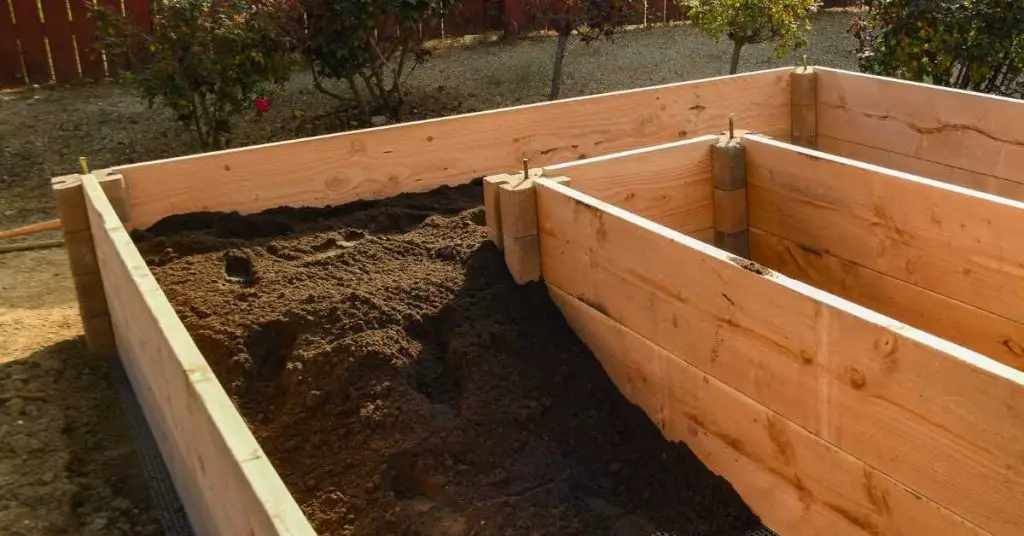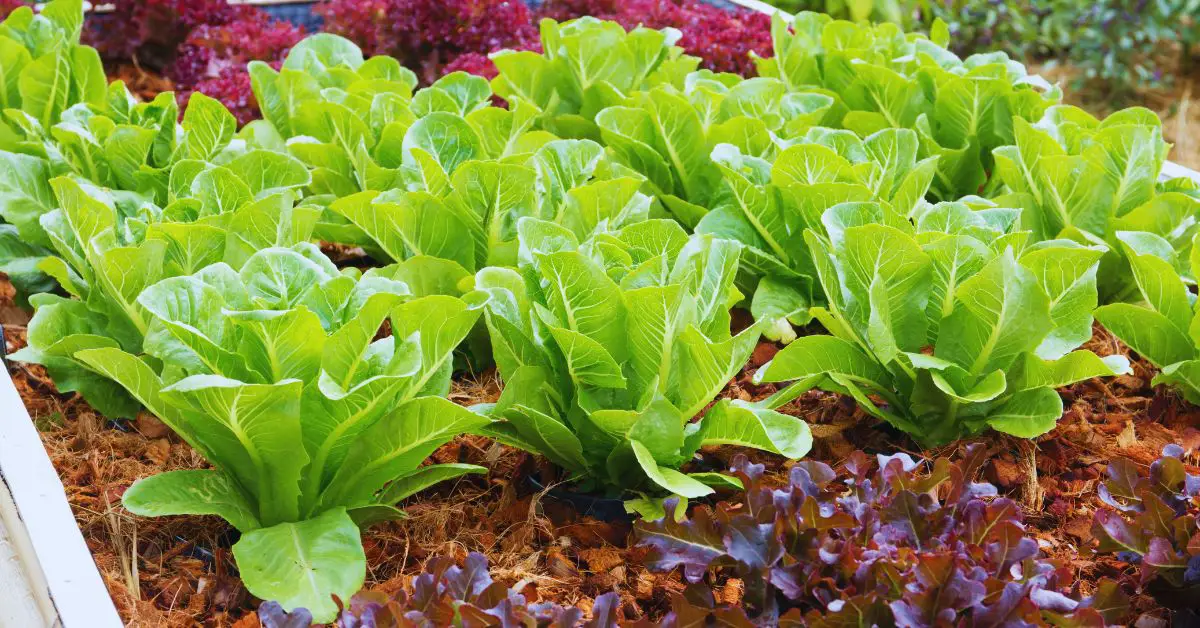How To Fill Raised Garden Beds (The Best Way)
If you want to garden, there are different ways to do it. You can do the traditional way and have a garden in the ground as our grandparents did, or you can use the easier method of raised bed gardening.
If you choose the latter, one of the first things you need to think about is how to fill your raised beds with soil, what type of soil to use, and more. This can be overwhelming if you are building more than one bed, but I have some great information for you.
What Soil To Put In Raised Beds
When you are looking for soil to use in raised beds, you will find many different types of soil marketed as “raised bed soil.” However, most of these soils are not worth the price. They often don’t work well in raised beds and can create a mess later on.
You can save money and headaches by mixing your own soil for your new raised beds. This will make sure that the soil is the right mix and has all of the ingredients you need to help your garden be successful.

What Is The Best Soil Mix For Raised Beds?
The best way to have a great garden is to start with good soil. When you have a raised bed, you can put better soil in it and your plants will grow better. The soil should be loose and have lots of nutrients so the plants can get what they need.
Before you put your raised beds in their permanent location, get rid of the grass or perennial weeds. Use a pitchfork or a spade to double dig the soil underneath your raised bed to a depth of 6-10″ inches to improve drainage and to loosen the soil.
When you turn the soil over underneath your raised bed to a depth of 6-10″. This gives you another layer of soil that your plants can grow down into which makes your bed deeper and will allow you to grow plants with longer roots.
If you are anything like me and you have built more than one bed at a time and have to fill them at the same time, figuring out how much soil mix you will need can be a little tricky.
The best way to figure this out is to use a simple soil calculator that you can find online. You just put in the dimensions of your raised bed such as the length, width, and height of the bed and it will tell you approximately how much soil you will need to fill your bed.
Once you have that amount you can use this recipe to purchase the right amounts to mix up your soil blend:
- 60% topsoil
- 30% compost
- 10% Potting soil (this is a soil-less mix that usually includes ingredients like perlite or vermiculite)
Keep in mind that the amount of soil you need might vary depending on where you get it from. If the calculator says you need .444 cubic yards of soil, buy a half yard.
This will give you a little spare that you can always use in a container or two.
If you do not a source for high-quality topsoil in your area, you can use just a 50/50 blend of a potting mix and a high-quality screened compost.
You then add some peat moss or coco coir to your mix to promote water retention and to add another layer of organic matter to your soil.
This coco coir or peat moss should only make up about 20% of the overall volume of your soil mix.
Can You Use Potting Soil in Raised Beds?
Yes, you can use potting soil or mix in your raised beds. The only real difference between potting mix and garden soil is that potting mix doesn’t typically contain regular garden soil. Potting mix is generally referred to as a soil-less mix.
This means that it doesn’t contain soil but rather ingredients that are better for planting in a pot. Garden soil that you have in your garden or buy at the local big box store is usually too dense to plant in.
Potting mix is lightweight and provides a loose environment for roots to thrive in a pot or even a raised bed. The peat moss, perlite, and vermiculite that is often in potting mix helps to make a fluffy mix that doesn’t bog down when wet.
Raised Garden Bed Soil
The soil mix that you put into your raised bed is very important. More gardens fail or falter because of bad soil than almost anything else.
- Use a mix of high-quality screened compost, topsoil, and peat moss to give your plants the best soil to grow in. You can also add manure into the mix to add more nutrients to your mix. If you do not like the idea of adding manure to your raised bed, look for another type of compost to add instead. This can be mushroom compost, cotton burr compost, or other locally available composts.
- Make sure to overfill the beds right up to the top of the frame itself to allow the soil to settle some. It will happen every time that after you fill the bed, a couple of weeks later the soil has sunk.
- Set up drip irrigation for your new raised beds to help promote even and regular watering to provide your plants the moisture they need.
Raised Bed Soil Recipe
For the typical 4×8 foot raised bed:
- 4 – 2 cu ft bags of high-quality topsoil
- 2 – 5 gallon buckets of coconut coir or peat moss
- 2 – 3 cu ft bags of high-quality screened compost (screening removes large sticks and such)
- Enough mulch to put a 2-3 inch layer down on top of the bed when it is filled.
Frequently Asked Questions (FAQs)
Here are some of the most asked questions:
What Can I Fill My Raised Garden Bed With?
One of the easiest options that you can fill your raised garden bed with is a simple 50/50 blend of compost and topsoil. You will want to mix together one part high-quality screened compost to one part high-quality screened topsoil in order to fill your raised beds.
Can You Fill a Raised Bed with Just Compost?
Yes, despite what a lot of gardeners and professionals say, you can actually just fill a raised garden bed with just compost. You will want to find the highest quality compost that you can get locally and make sure that it is completely done cooking.
This just means that the compost is actually 100% finished. The easiest way to tell if compost is finished is to just smell it. Finished compost shouldn’t smell bad, or like manure, or like anything else. It should just smell like good ole soil.
The next thing you should do is to simply touch the compost to make sure it is not hot to the touch. If it is, that is a good indicator that the compost is still cooking or isn’t finished. If you use compost that isn’t finished or is still hot then you plants will often suffer in the early months and will be stunted.
How Many Bags of Soil Does It Take to Fill a 4×8 Raised Bed?
It depends on how tall your raised bed is because that factors in to how much soil you will need. You can use a soil calculator to figure the amount of soil you need by using the length, width, and height of you raised bed to get the total number of cubic feet that you will need. For a raised bed that is 4 foot wide by 8 foot long and 12 inches tall, you will need It will take approximately 22 bags of soil or 32 cubic feet of soil.
In this situation it may be a better option to look for a trusted, locally owned garden center that sell soil in bulk and look into their mixes to save a little money and work.
Can You Use Old Potting Mix In a Raised Bed?
Yes, you can certainly re-use old potting mix to fill your raised garden bed. There is nothing wrong with reusing old potting mix to fill or top off a raised bed as long as you didn’t have any disease issues in the pot the previous year.
You wouldn’t want to spread that into your raised bed. In this case, it is better to just dump that potting mix that had disease issues.
Here is a great video on how to reuse potting mix year after year:
In Conclusion
Have you just built a raised bed garden and are wondering how to fill it with soil? Not to worry, we’ve got you covered.
By using a mix of topsoil, compost, peat moss, or coco coir, you can create the perfect soil mixture for your new beds.
This will give your plants the best chance at flourishing in their new home. So what are you waiting for? Get started on filling those beds!





